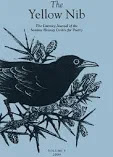At the start of the first lockdown (end March, 2020) I did not write about the pandemic or lockdown; I found it hard to write at all. It was all too vast a subject and I was too ignorant. I was also filled with fury - at the unnecessary deaths of care-workers and their patients in care homes, and staff in hospitals all because they did not have the proper PPE.
But eventually here is how I coped and I hope some ideas that will help others:
Tips for keeping your poetic flow going:
keeping your spirits up
but also cheering occupations outwith your usual:
For me, in July it was an eco-poetry course with Jen Hadfield (online via Moniack Mhor, Scotland's writing centre) - a new way of looking and writing poetry - slow poetry, writing about your back garden, or your window box if that's all you have;
this echoed nicely the practice of Tai Chi and then Yoga (tutored online by my friend, and fellow poet, Trish (Patricia) Ace. A way to keep flexible, calm and meditative.
This is also a calm and meditative practice and I had had no idea of how difficult it would be to paint a line, whether in calligraphy or painting, that is from the heart, perfect the first time (like the proverbial arrow straight to its target.) I have treated myself to a wooden brush holder with carved dragon heads either side of the frame, many brushes in wolf (though Chi says it's more likely weasel) and goat hair. I gather a new-born baby's hair is for the finest work, but I'm a few years off that standard. Essential to have the right rice paper and Chinese inks.
But poetry-writing returned, as I guess it was bound to. Some influenced by Daoist paintings.





